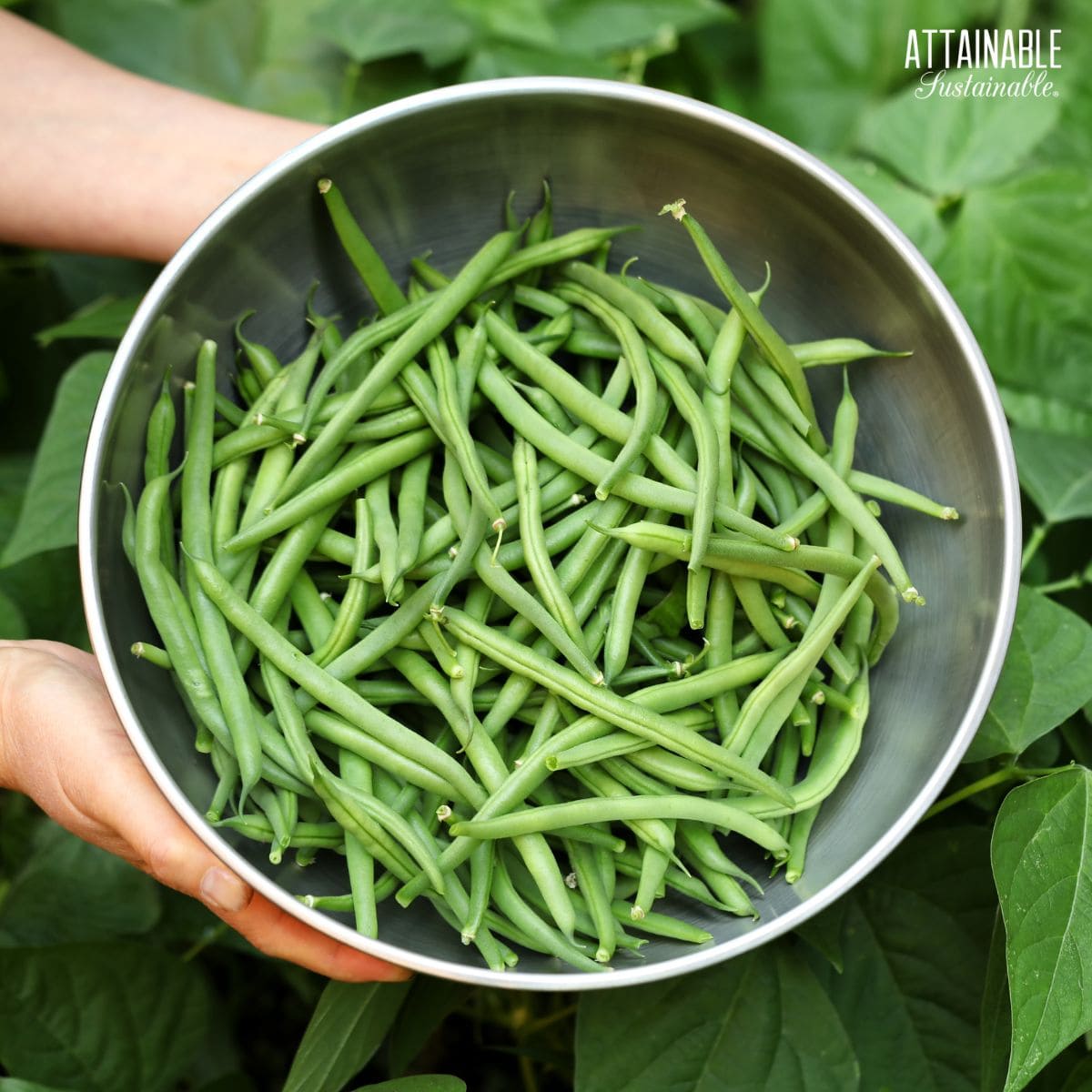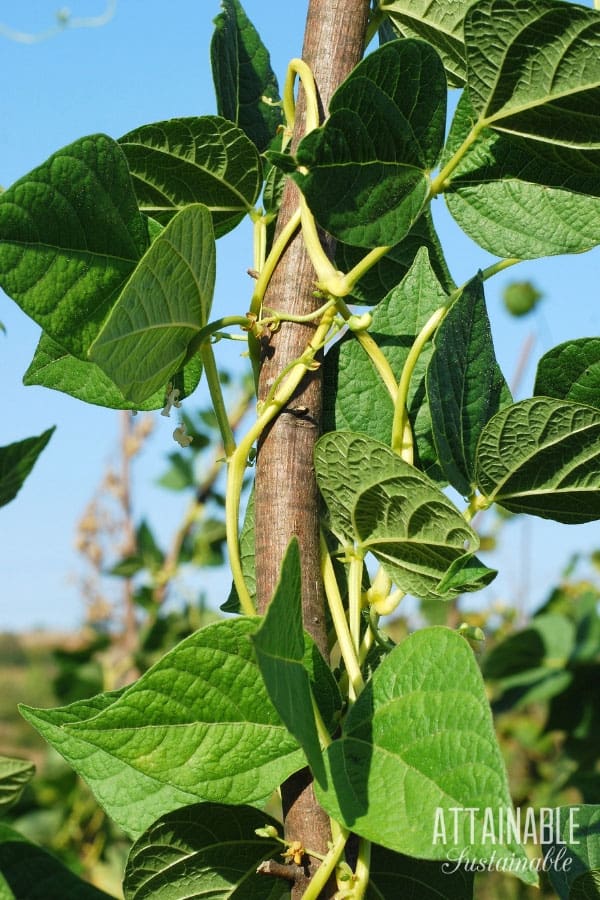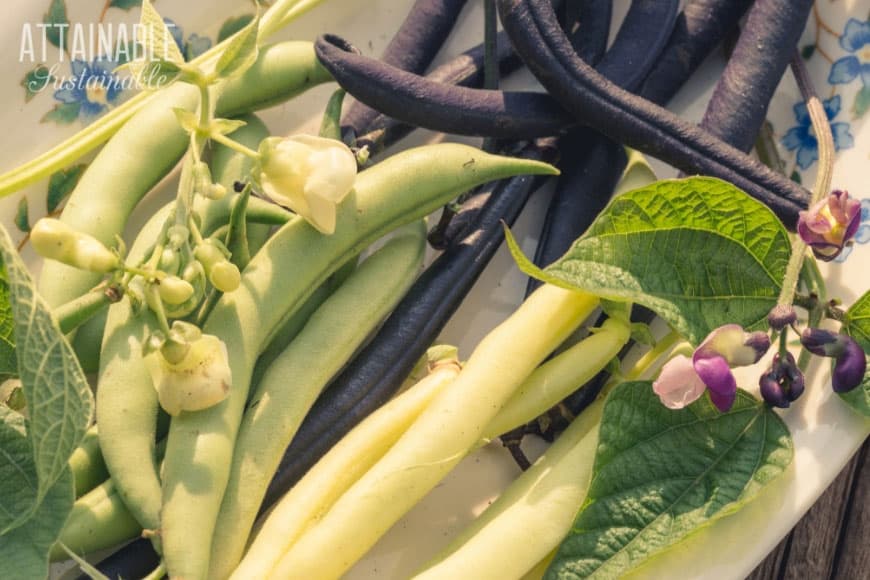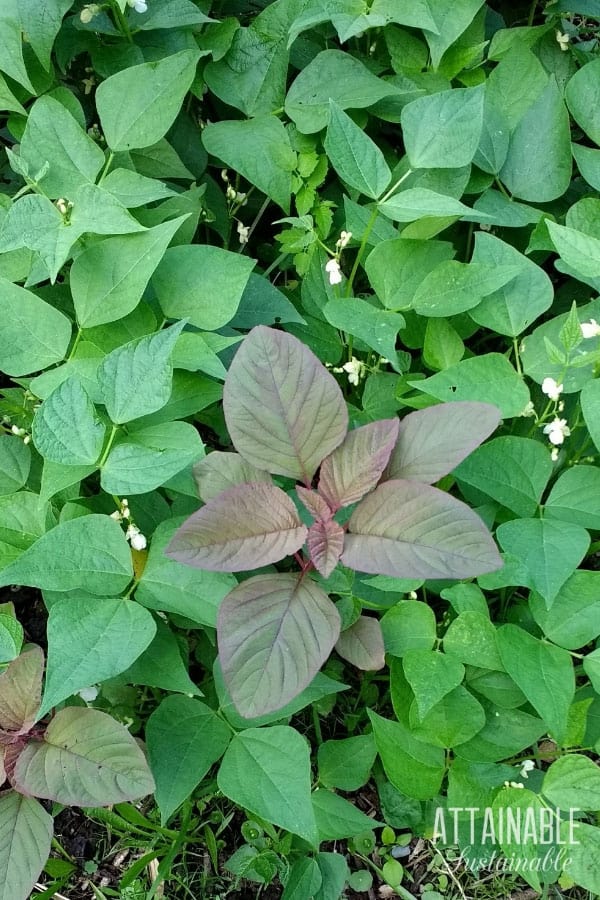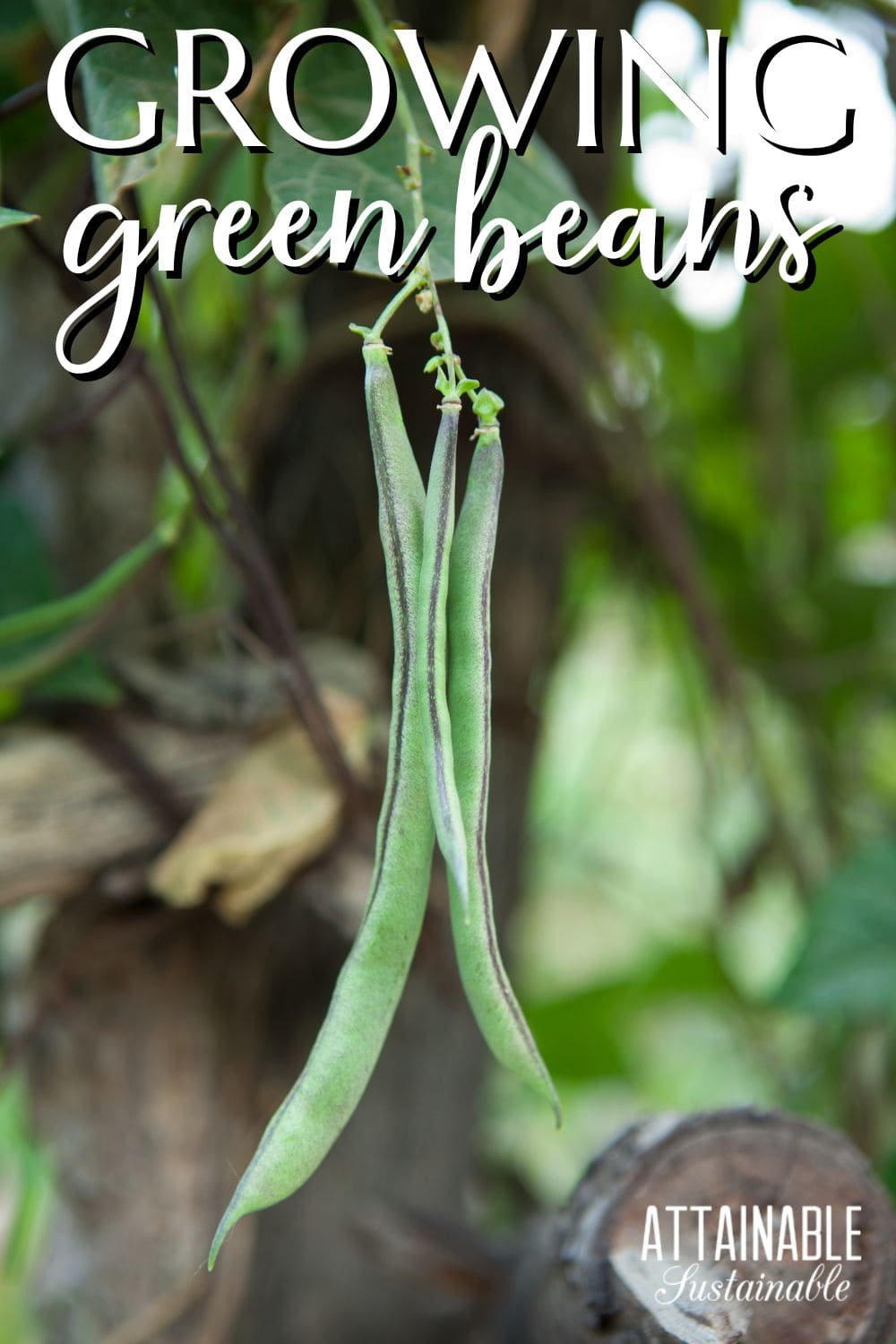Growing green beans in a home garden is a satisfying endeavor! Also known as string beans, these legumes are easy to grow and a green bean plant will produce for an extended period of time.
For similar harvest that does well in cooler weather, consider growing peas in the garden.
Originally published April 2019; this post has been updated.
New to gardening? Limited on space? The 5-Gallon Garden gives you the skills you need to grow food in the space you have. Get started with your garden today!
Introduction to Green Beans
Green Bean Varieties
Green beans come in many varieties. Some are actually green, some are yellow, and others grow in a beautiful dark purple. (Sadly, that purple color doesn’t remain once they’re cooked!)
The botanical name for these common garden plants is Phaseolus vulgaris. Beans from these plants can be used as tender snap beans — called green beans, string beans, or French beans — that are cooked in their pod. If you’re growing them to eat fresh in the pod, opt for “stringless” varieties.
They can also be harvested for dry beans. The pinto beans and kidney beans that you use to make your favorite chili? Those are seeds from Phaseolus vulgaris that have been allowed to mature and dry.
Grow Some Greens!
Ready to grow fresh greens, no matter WHERE you live? Sign up for my
FREE quick-start guide and start growing some of your own food!
There are numerous varieties of phaseolus vulgaris, each with its own characteristics. Some are excellent for drying while others are known for their tender pods when eaten as a green bean. Here, we’ll focus on growing fresh tender pod green beans.
When choosing the type of bean seeds for your vegetable garden, note that you’ll have the option of bush types of beans — those that stay low and compact — or pole beans, which require support as they can vine up to ten feet tall.
A bamboo trellis is an excellent support for pole beans. Which you choose will depend entirely on your garden space. Following are some favored varieties.
Bush Bean Varieties:
Blue Lake — This classic green bean has been grown in gardens for generations. The long pods are stringless, making them more pleasant to eat.
Tendergreen — These flavorful, stringless beans do well with the summer heat. They’re disease-resistant, too.
Roma II — Produces flat, wide pods that grow to 6″ long.
Purple Dove — Violet blossoms give way to purple pods that are slightly flat.
Pole Bean Varieties:
Kentucky Wonder — An American classic, this green bean is a prolific producer of roundish pods that are excellent for preserving.
Blue Lake — Yep, this variety comes in both pole and bush growth habits.
How to Plant String Beans
Green beans are best sowed directly in the garden after the last frost; they don’t transplant well. (Check with your cooperative extension office for frost dates in your area.)
Green bean plants thrive during the warm summer growing season. Green bean seeds can benefit from soaking for 8-12 hours before planting. [More on how to soak seeds here.]
Plant seeds 1″ to 2″ deep. For bush beans, plant seeds every four inches in rows that are 12″ apart. Pole beans need support; set up your trellis and plant seeds every six inches along the base. The vines will emerge and begin climbing right away.
For an extended string bean harvest, use succession planting. Add another row or two of beans every couple of weeks, up until about 90 days before your first frost date.
You can expect to harvest the first beans from your plants 65-75 days after planting seeds. String bean plants will continue to produce well for 4-6 weeks after that first harvest.
Requirements for Growing Green Beans
Light Requirements
Grow green bean plants in a spot where they’ll get 6 to 8 hours of full sun.
Soil Requirements
Plant green beans in well-drained soil that’s been amended with plenty of compost. Since beans are legumes, they fix nitrogen from the soil so they don’t require much fertilizer.
Water Requirements
Water regularly. Beans don’t like to dry out. (Though neither do they like to be saturated!) Mulch around the plants to help maintain moisture.
Combating Pests and Other Problems
While green beans are not terribly finicky, they can be susceptible to a number of pests. An infestation of aphids can stunt plants.
Aphids also infect bean plants with yellow mosaic virus, so you’ll want to deal with them quickly if you have an infestation. At the first sign of these pests, use a steady stream of water to spray them off. (Here’s more on combating aphids in the garden.)
In my Hawaii garden, Chinese beetles attack the plants and can quickly turn the plants’ leaves into a lacy skeleton.
How to Grow Green Beans in Containers
You can grow green beans in containers. They’ll grow just fine. However, keep in mind that one or two plants probably won’t meet your family’s needs if you like green beans.
According to this basic guideline, you’ll need to plant 4-8 bush beans per person to harvest enough. Of course, this varies depending on how much you eat and whether or not you want enough to preserve, but it’s a good thing to think about.
Many a new gardener has planted just one or two plants and been disappointed to find that growing just a few green bean plants didn’t suffice.
To plant beans in containers, opt for a large container (18″-24″ in diameter) and fill it with good-quality potting soil. Bush beans are the best bet for container growing. Set three seeds in a triangular pattern in each pot.
Harvesting Green Beans
Green beans are ready for harvest in about 50-70 days, depending on the variety. Whether you opt for bush or pole beans, they’ll continue producing for a month or so from the first harvest. Your job is to pick the beans on a regular basis.
I find that harvesting beans every other day works well. Harvest beans while they’re still young, about 3-4″ long. If you allow them to grow much longer, they’ll start developing larger seeds and a thicker pod. This makes for a tough green bean.
Ripe beans grow in pairs or clusters. To harvest green beans, use one hand to hold the plant just above the ripe beans. With your other hand, pull the beans by the stem. Just yanking the beans off without holding the plant can tear off portions of the plant itself.
Using Fresh String Beans
There are so many delicious ways to add green beans to your meals. You can blanch them and serve them with a dip as a healthy appetizer. Fry them up with a few pieces of bacon for a tasty side dish. Or pickle them to preserve the harvest.
Saving Green Bean Seeds
If you’ve opted for an open-pollinated, heirloom variety, you can save seeds for next year’s garden. (Hybrid seeds won’t retain the qualities they’ve been bred for.)
To save seeds, stop harvesting the pods from several plants. This allows them to fully mature on the vine. Once fully mature, the pods will begin to dry out.
As long as the weather remains dry, you can let the pods dry completely on the vine. If rain threatens, harvest the mature pods and store them in a cool, dry place.
I’ve had good luck with storing beans in a small brown bag. Come springtime, you can remove the seeds from the pods and you’ll be ready for growing green beans again. For more on saving seeds, go here.

